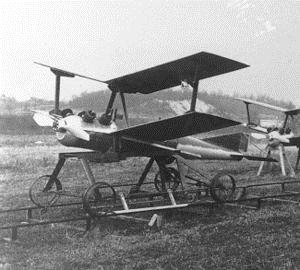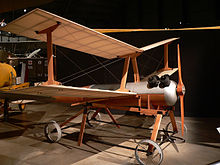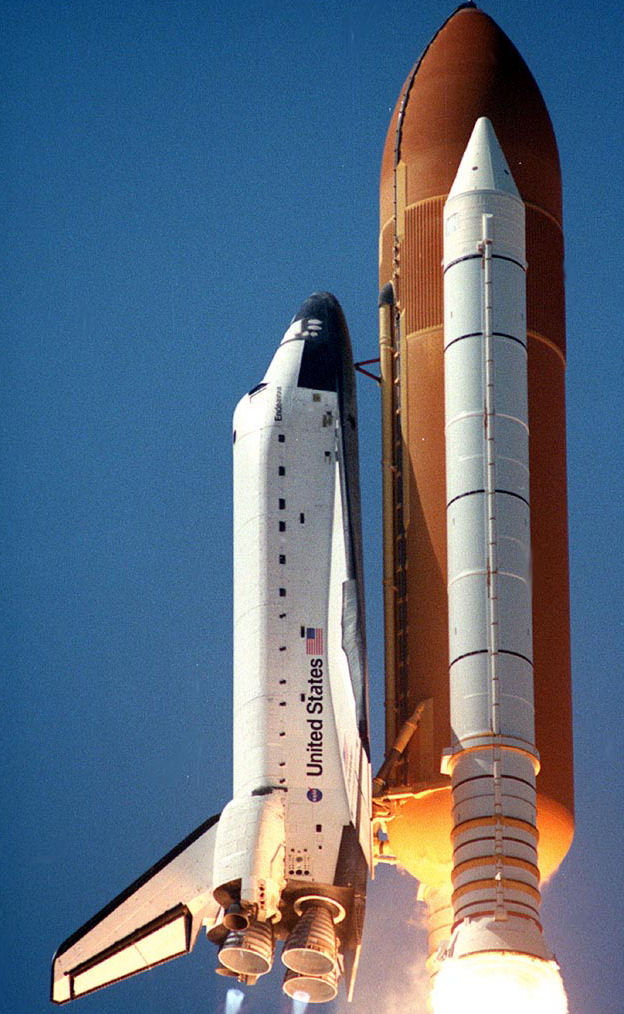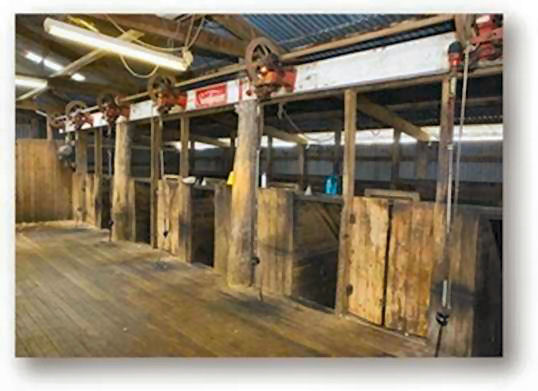|
|
|
|
Radschool Association Magazine - Vol 38 Page 16 |
|
|
Privacy Policy | Editorial Policy | Profit Policy | Join the Association | List of Members | Contact us | Index | Links |
|
|
|
|
|
Car Radios.
Radios are so much a part of the driving experience today that it seems like cars have always had them. But of course they haven’t. Here’s the story.
One evening in the USA, in 1929, two young men named William Lear and Elmer Wavering drove their girlfriends to a lookout point high above the Mississippi River town of Quincy, Illinois, to watch the sunset. It was a romantic night to be sure, but one of the women observed that it would be even nicer if they could listen to music in the car.
Lear and Wavering liked the idea. Both men had tinkered with radios – Lear had served as a radio operator in the U. S. Navy during World War I – and it wasn’t long before they were taking apart a battery powered home radio and trying to get it to work in a car. But it wasn’t as easy as it sounds: cars have ignition switches, generators, spark plugs, and other electrical equipment that generate noisy static interference, making it nearly impossible to listen to the radio when the engine was running.
One by one, Lear and Wavering identified and eliminated each source of electrical interference. When they finally got their radio to work, they took it to a radio convention in Chicago. There they met Paul Galvin (1895 – 1959), owner of Galvin Manufacturing Corporation. He made a product called a “battery eliminator” a device that allowed battery-powered radios to run on household AC current, ie: an AC/DC rectifier. But as more homes were wired for electricity, more radio manufacturers made AC-powered radios. Galvin needed a new product to manufacture. When he met Lear and Wavering at the radio convention, he found it. He believed that mass-produced, affordable car radios had the potential to become a huge business.
Lear and Wavering set up shop in Galvin’s factory, and when they perfected their first radio, they installed it in his Studebaker. Then Galvin went to a local banker to apply for a loan. Thinking it might sweeten the deal, he had his men install a radio in the banker’s Packard. Good idea, but it didn’t work out as they planned, half an hour after the installation, the banker’s Packard caught on fire. (They didn’t get the loan.)
Galvin didn’t give up. He drove his Studebaker nearly 800 miles to Atlantic City to show off the radio at the 1930 Radio Manufacturers Association convention. Too broke to afford a booth, he parked the car outside the convention hall and cranked up the radio so that passing conventioneers could hear it. That idea worked – he got enough orders to put the radio into production.
That first production model was called the 5T71. Galvin decided he needed to come up with something a little catchier. In those days many companies in the phonograph and radio businesses used the suffix “ola” for their names – Radiola, Columbiola, and Victrola were three of the biggest. Galvin decided to do the same thing, and since his radio was intended for use in a motor vehicle, he decided to call it the Motorola.
But even with the name change, the radio still had problems:
|
|
|
|
|
|
There was a new hair salon which opened up right across the street from an old established barber's shop. The new shop put up a big sign, "WE GIVE SEVEN DOLLAR HAIR CUTS!" Not to be outdone, the old shop put out their own sign: "WE FIX SEVEN DOLLAR HAIR CUTS”
|
|
|
Selling complicated car radios that cost 20 percent of the price of
a brand-new car wouldn’t have been easy in the best of times, let
alone during the Great Depression – Galvin lost money in 1930 and
struggled for a couple of years after that. But things picked up in
1933 when Ford began offering Motorolas pre-installed at the
factory. In 1934 they got another boost when Galvin struck a deal
with the B. F. Goodrich Tyre Company to sell and install them in its
chain of tyre stores. By then the price of the radio, installation
In the meantime, Galvin continued to develop new uses for car radios. In 1936, the same year that it introduced push-button tuning, it also introduced the Motorola Police Cruiser, a standard car radio that was factory preset to a single frequency to pick up police broadcasts. In 1940 he developed the first handheld two-way radio – the Handie-Talkie – for the U. S. Army.
A lot of the communications technologies that we take for granted today were born in Motorola labs in the years that followed World War II. In 1947 they came out with the first television to sell under $200. In 1956 the company introduced the world’s first pager in 1969 it supplied the radio and television equipment that was used to televise Neil Armstrong’s first steps on the Moon. In 1973 it invented the world’s first handheld cellular phone. Today Motorola is one of the second-largest mobile phone manufacturers in the world. And it all started with the car radio.
The two men who installed the first radio in Paul Galvin’s car,
Elmer Wavering and William Lear, ended up taking very different
paths in life. Wavering stayed with Motorola. In the 1950’s he
helped change the car experience again when he developed the first
automotive alternator, replacing inefficient and unreliable
generators. The invention lead to such luxuries as power windows,
power seats, and, eventually, air-conditioning. He
later
Lear (1902 – 1978) also continued inventing and today he holds more than 150 patents in his name. He invented eight-track tape players but what he’s really famous for are his contributions to the field of aviation. He invented radio direction finders for aircraft, aided in the invention of the autopilot, designed the first fully automatic aircraft landing system, and in 1963 introduced his most famous invention of all, the Lear Jet.
The concept of a jet designed specifically for business use was not
very radical in the late 1950s. Many corporations were looking for a
more modern airplane to replace the odd assortment of Gulfstream ls,
Howard 500s and DC-3s then in use. There were two jets already on
the market, the Lockheed JetStar and the North American Sabreliner
although both had been originally designed for the military and were
very expensive. Lear could see that a small, relatively inexpensive
corporate jet was an idea whose time was coming;
Getting the first business jet onto the market was turning into a horse race. In Europe, the German Hansa Jet and the British DH 125 were firm commitments by their manufacturers. In the USA, Aero Commander had announced the Jet Commander, a brand-new design by Ted Smith (of Aerostar fame), a man as respected within the industry as was Lear. The Jet Commander beat the Lear Jet into the air primarily because Lear had lost so much time with the false start in Switzerland, but the race was far from over: the first airplane to receive a type certificate would be recorded in history as the first business jet.
On the 31st July, 1964, less than ten months from the Lear Jet's first flight, FAA Administrator Najeeb Halaby personally flew to Wichita to present the type certificate to Lear, beating the Jet Commander by over three months to the title of the first mass-produced, affordable business jet. Not bad for a guy who dropped out of school after the eighth grade.
|
|
|
Paddy says "Mick, I'm thinking of buying a Labrador ." "Bugger that" says Mick "Have you seen how many of their owners go blind"
|
|
|
Un-manned aircraft
During World War I, the United States Army aircraft board asked
Charles Kettering of Dayton, Ohio to design an unmanned "flying
bomb" which could hit a target at a range of 40 miles. Kettering's
design, formally called the Kettering Aerial Torpedo but later known
as the Kettering Bug, was built by the Dayton-Wright Airplane
Company. Orville Wright
The aircraft was powered by one 4-cylinder, 40-horsepower De Palma engine. The engine was mass-produced by the Ford Motor Company for about $40 each. The fuselage was constructed of wood laminates and papier-mâché, while the wings were made of cardboard. The "Bug" could fly at a speed of 50mph. Total cost of each "Bug" was $400.
The Bug was launched using a dolly-and-track system, similar to the method used by the Wright Brothers when they made their first powered flights in 1903. Once launched, a small onboard gyroscope guided the aircraft to its destination. The control system used a pneumatic/vacuum system, an electric system and an aneroid barometer/altimeter. To ensure the Bug hit its target, a mechanical system was devised that would track the aircraft's distance flown. Before take-off technicians determined the distance to be travelled relative to the air, taking into account wind speed and direction along the flight path. This was used to calculate the total number of engine revolutions needed for the Bug to reach its destination. When a total revolution counter reached this value a cam dropped down which shut off the engine and retracted the bolts attaching the wings, which fell off. The Bug began a ballistic trajectory into the target; the impact detonated the payload of 180 pounds (81kg) of explosives.
The prototype Bug was completed and delivered to the Aviation
Section of the U.S. Army
Despite some successes during initial testing, the "Bug" was never used in combat. Officials worried about their reliability when carrying explosives over Allied troops. By the time the War ended about 45 Bugs had been produced. The aircraft and its technology remained a secret until World War II.
Today a full size model is on display at National Museum of the United States Air Force in Dayton, Ohio. It was constructed by Museum staff members, and went on display in 1964.
General characteristics
Performance
|
|
|
|
|
|
A meeting is an event at which minutes are kept and hours are lost.
|
|
|
Democracy.
In 1887 Alexander Tyler, a Scottish history professor at the University of Edinburgh, had this to say about the fall of the Athenian Republic some 2,000 years prior:
"A democracy is always temporary in nature; it simply cannot exist as a permanent form of government. A democracy will continue to exist up until the time that voters discover that they can vote themselves generous gifts from the public treasury. From that moment on, the majority always votes for the candidates who promise the most benefits from the public treasury, with the result that every democracy will finally collapse over loose fiscal policy, (which is) always followed by a dictatorship."
The average age of the world's greatest civilizations from the beginning of history, has been about 200 years. During those 200 years, these nations always progressed through the following sequence:
· From bondage to spiritual faith; · From spiritual faith to great courage; · From courage to liberty; · From liberty to abundance; · From abundance to complacency; · From complacency to apathy; · From apathy to dependence; · From dependence back into bondage.
From this hypothesis, Tyler suggests the USA, Born in 1776 – Died in 2011.
Professor Joseph Olson of Hamline University School of Law in St. Paul, Minnesota, points out some interesting facts concerning the last (2008) US Presidential election:
· Number of States won by: Obama: 19 - McCain: 29 · Square miles of land won by: Obama: 580,000 - McCain: 2,427,000 · Population of counties won by: Obama: 127 million - McCain: 143 million · Murder rate per 100,000 residents in counties won by: Obama: 13.2 - McCain: 2.1
Professor Olson adds: "In aggregate, the map of the territory McCain won was mostly the land owned by the taxpaying citizens of the country. Obama territory mostly encompassed those citizens living in low income tenements and living off various forms of government welfare..."
Olson believes the United States is now somewhere between the "complacency and apathy" phase of Professor Tyler's definition of democracy, with some forty percent of the nation's population already having reached the "governmental dependency" phase. If Congress grants amnesty and citizenship to twenty million criminal invaders called illegal's, and they vote - then we can say goodbye to the USA in fewer than five years.
Believe it or not!!!
|
|
|
To err is human, but to really stuff things up requires a computer.
|
|
|
The Space Shuttle.
Sadly, that magnificent machine, the Nasa Space Shuttle, is no
more. The shuttle began setting records with its first launch on the
12th April, 1981 and continued to set high marks
During that time, there were two disastrous missions. In 1986 Challenger exploded during launch and in 2003 Columbia broke up during re-entry, in both cases killing the entire crew. This latter accident grounded the fleet while technicians tried to find out why. The 2005 shuttle Discovery was supposed to initiate the return to flight, but a large piece of insulating foam broke free from its external fuel tank, leaving scientists to solve the mystery and the program grounded once more until July 2006, when the Discovery and Atlantis both carried out successful missions.
Between the first launch in 1981 and the final landing in 2011, NASA's space shuttle fleet flew 135 missions and inspired generations.
Click HERE to see a fascinating time-lapse sequence of a shuttle being prepared for launch, it shows the procedure from final assembly to launch. Unfortunately it is silent, there is no sound until the last few seconds.
|
|
|
Time.
Time has had a very chequered history. The duration of one second in
time and exactly who is the official time keeper has varied over the
years. Way back, when Britannia ruled the waves, in order for
sailors to know where they were, they needed a time reference so
they could relate their current position on the world’s oceans back
to a fixed reference point. At Greenwich, which is on the Thames in
London, a line was drawn in the sand and
Greenwich time was referred to as Z time, Z for Zero time and was termed GMT but when more accurate “clocks” came into being, GMT was replaced with UTC.
At the 1884 International Meridian Conference held in Washington D.C., the local mean solar time at the Royal Observatory, Greenwich in England was chosen to define the Universal day, counted from 0 hours at mean midnight. This agreed with civil Greenwich Mean Time (GMT), which had been used since 1847.
But, just to complicate things, the astronomical GMT began at mean noon, 12 hours after mean midnight on the same day and nautical GMT began at mean noon, 12 hours before mean midnight on the dame day.
In 1884, the Greenwich Meridian was used for two-thirds of all charts and maps as their Prime Meridian until in 1928 when it was changed to the term Universal Time (UT) which referred to the day starting at midnight at Greenwich. In 1955, the caesium atomic clock was invented. This provided a form of timekeeping that was both more stable and more convenient than astronomical observations then in 1956, the U.S. developed atomic frequency time scales and in 1959 these time scales were used as the base from which shortwave radio station WWV started to broadcast time signals. In the late 1960’s, early 1970,s most organisations that needed to maintain accurate time, aircraft operators and ATC for instance, all began their day by tuning into WWV to sync their clocks.
In 1958, it was agreed that the standard for the length of one second was the time that governs the movement of the planets and moons in the solar system and allows one to accurately predict the observed positions of solar system bodies. This was called an ephemeris second.
By 1967, it was realised that there were two separate but different methods of determining the length of one second, and even though the difference would be indistinguishable to a lot of us, it was not acceptable to the scientific bods. There was the French International System of Units method which used the caesium atomic clock method and the ephemeris second method, similar but not exactly the same.
Coordinated Universal Time is now based on International Atomic Time (TAI), a time standard calculated using a weighted average of signals from atomic clocks located in nearly 70 national laboratories around the world. time
Time Zones around the world are given a letter to denote them, for example, Perth in WA, which is 8 hours ahead of UTC is given the letter H.
|
|
|
A - Alpha Time Zone +1 hour B - Bravo Time Zone +2 hours C - Charlie Time Zone +3 hours D - Delta Time Zone + 4 hours E - Echo Time Zone + 5 hours F - Foxtrot Time Zone + 6 hours G - Golf Time Zone + 7 hours H - Hotel Time Zone + 8 hours I - India Time Zone + 9 hours K – Kilo Time Zone + 10 hours L - Lima Time Zone + 11 hours M - Mike Time Zone + 12 hour
|
N - November Time Zone -1 hour O - Oscar Time Zone - 2 hours P - Papa Time Zone - 3 hours Q - Quebec Time Zone - 4 hours R - Romeo Time Zone - 5 hours S - Sierra Time Zone - 6 hours T - Tango Time Zone - 7 hours U - Uniform Time Zone - 8 hours V - Victor Time Zone - 9 hours W - Whiskey Time Zone -10 hours X - X-ray Time Zone - 11 hours Y - Yankee Time Zone -12 hours Z - Zulu Time Zone 0
|
|
|
|
|
A Girl, a Holden and a Mattress.
(We all know what you’re thinking Ted – but you’re wrong!!!)
A girl ran over an inner-spring mattress on the highway and decided not to worry – she just kept on driving. Unfortunately for her, it caught on the undercarriage of her Holden and the ensuing jumble finally whipped around enough to tear a hole in the fuel tank. The subsequent lack of fuel is what finally brought her vehicle to its knees. Tough little cars these Holdens!!!
She had managed to drive 50 kms, with a 25kg tangle of “stuff” wrapped around her drive shaft before the engine snuffed it due to lack of fuel. She rang and had the car towed to her Holden Dealership where she told service reception that the car was making a “sort of funny noise”. The Holden people put the car up on a hoist and couldn’t believe what they saw – click HERE to see for yourself.
The Shearing shed.
When the shearing sheds are silent and the stock camps fallen quiet When the gidgee coals no longer glow across the outback night And the bush is forced to hang a sign, 'gone broke and won't be back' And spirits fear to find a way beyond the beaten track.
When harvesters stand derelict upon the wind swept plains And brave hearts pin their hopes no more on chance of loving rains When a hundred outback settlements are ghost towns overnight When we've lost the drive and heart we had to once more see us right
|
|
|
|
|
|
|
|
|
When 'Pioneer' means a stereo and 'Digger' some backhoe And the 'Outback' is behind the house, there's nowhere else to go And 'Anzac' is a biscuit brand and probably foreign owned And education really means brainwashed and neatly cloned
When you have to bake a loaf of bread to make a decent crust And our heritage once enshrined in gold is crumbling to dust And old folk pay their camping fees on land for which they fought And fishing is a great escape; this is until you're caught
When you see our kids with yankee caps and resentment in their eyes And the soaring crime and hopeless hearts is no longer a surprise When the name of RM Williams is a yuppie clothing brand Not a product of our heritage that grew off the land
When offering a hand makes people think you'll amputate And two dogs meeting in the street is what you call a 'Mate' When 'Political Correctness' has replaced all common sense When you're forced to see it their way, there's no sitting on the fence
Yes one day you might find yourself an outcast in this land Perhaps your heart will tell you then, '. I should have made a stand' Just go and ask the farmers that should remove all doubt Then join the swelling ranks who say, ' - don't sell Australia out'
|
|
|
|
|
|
|
|
|
Back Go to page: 1 2 3 4 5 6 7 8 9 10 11 12 13 14 15 16 17 18 19 20 Forward
|
|
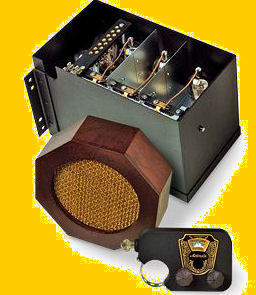
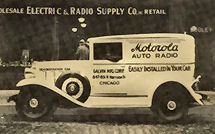
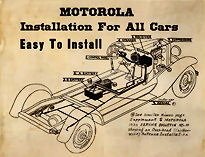
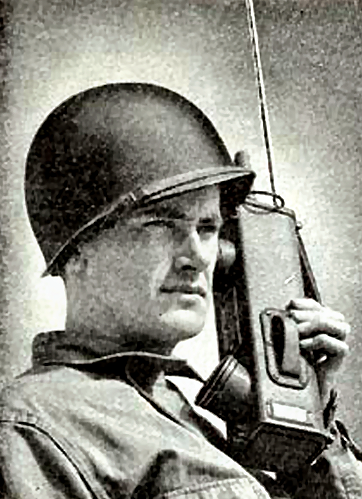
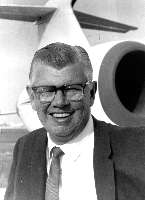 became
president of Motorola and achieved other things before retiring in
1972. He was elected into the "Automotive Hall Of Fame" in 1989 and
died on the 7th November, 1998 at the age of 91.
became
president of Motorola and achieved other things before retiring in
1972. He was elected into the "Automotive Hall Of Fame" in 1989 and
died on the 7th November, 1998 at the age of 91.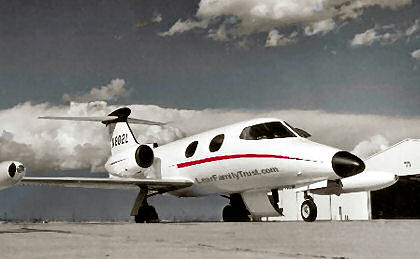 visualizing his name on it no doubt made the idea even more
enticing. At the time, he was the head of a very successful firm he
had founded that built autopilots and related hardware. He
approached the board of directors with his idea of building a new
airplane and received his first setback: they refused to have
anything to do with it. To anyone else in Lear's position, that, no
doubt, would have been that, but Lear, in a gesture that was quite
typical of him, left his company and headed for Switzerland. That
didn’t work out either and he returned to the USA in 1962 and
settled in Wichita and built his factory.
visualizing his name on it no doubt made the idea even more
enticing. At the time, he was the head of a very successful firm he
had founded that built autopilots and related hardware. He
approached the board of directors with his idea of building a new
airplane and received his first setback: they refused to have
anything to do with it. To anyone else in Lear's position, that, no
doubt, would have been that, but Lear, in a gesture that was quite
typical of him, left his company and headed for Switzerland. That
didn’t work out either and he returned to the USA in 1962 and
settled in Wichita and built his factory.